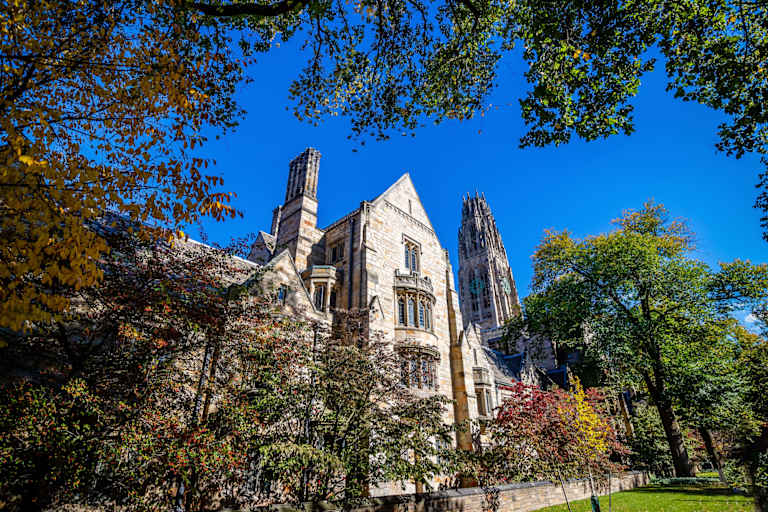Top 12 Need-Blind Colleges
Did you know that some colleges and universities consider your family’s finances when deciding whether to admit you? That means families that can’t afford to pay tuition costs might lose out.
Need-blind colleges don’t consider your ability to pay when evaluating your application. At these schools, admission decisions focus on merit, not financial circumstances.
Around 100 colleges in the U.S. follow need-blind admissions policies. But what about after you receive an acceptance letter? A much smaller number covers every student’s full financial need without loans.
Our list presents the top need-blind colleges, all of which meet 100% of demonstrated financial need through a combination of scholarships, grants, and work-study — no student loans.
1. Columbia University — New York, NY
Manhattan’s famed Ivy League institution, Columbia uses need-blind admissions for first-year applicants, including undocumented students and some noncitizens. The university offers financial aid packages that meet every admitted student’s demonstrated need after the expected family contribution.
According to the school’s website, around 40% of financial aid recipients have a parent/guardian contribution of less than $5,000.
The university also reports that it awards more than $177 million in scholarships and grants annually. This includes the Columbia Grant, a form of need-based funding for admitted students.
2. Harvard University — Cambridge, MA
Like Columbia, Harvard pairs a need-blind admissions policy with 100% need-based aid and no loans. That means your ability to pay for Harvard plays no role in admission decisions. Note that Harvard does not offer any merit-based aid — only need-based aid.
All in all, around 1 in 5 Harvard families pays nothing toward school costs. The university reports an average parent/guardian contribution of $12,000. While the sticker price might intimidate some applicants, many pay much less for an Ivy League education at Harvard.
3. Amherst College — Amherst, MA
A top-ranked liberal arts college, Amherst’s need-blind admissions policy means students don’t need to worry that their family’s finances will prevent them from getting accepted.
Amherst’s track record of offering need-based aid dates back to the school’s founding in 1821. Most recently, the college distributed over $60 million in scholarships during the 2020-21 academic year, all while following a no-loan policy.
Financial aid packages include scholarships, grants, and student employment that averages 6-8 hours per week.
4. Princeton University — Princeton, NJ
Princeton goes above and beyond as a need-blind school. While not considering financial aid needs during the admissions process, the school also promises to cover 100% of demonstrated need for admitted students without loans. Even international students qualify for need-blind admission.
For the Class of 2025, the prestigious Ivy League institution awarded an average grant greater than the annual tuition cost. As a result, 83% of Princeton grads earned a degree with no debt.
5. Stanford University — Stanford, CA
One of the most elite institutions in the world, Stanford also ranks as one of the best need-blind colleges. The admissions office at Stanford never factors financial status into admission decisions. Admitted students also benefit from Stanford’s need-based financial aid program.
The university determines financial need based on each family’s unique financial circumstances. Around half of Stanford students receive need-based aid, primarily consisting of university scholarships. Rather than asking applicants to submit a separate application for institutional aid, Stanford uses the CSS Profile to create a financial aid package.
6. Swarthmore College — Swarthmore, PA
Swarthmore, a prestigious liberal arts college, practices need-blind admissions, meaning admissions officers do not factor in an applicant’s ability to pay tuition when making decisions. This policy extends to U.S. citizens, permanent residents, refugees, and undocumented students.
The school awarded $46 million in need-based aid in 2019-20, with 55% of students receiving a Swarthmore Scholarship. Admitted students also receive a financial aid award that does not include loans. Many students work part time in campus-based jobs.
7. Massachusetts Institute of Technology — Cambridge, MA
MIT calls itself “need-blind and full-need.” This means the admissions process does not consider financial circumstances and meets 100% of admitted students’ demonstrated need without loans.
For the 2020-21 school year, 28% of MIT undergrads received scholarships and grants that covered or exceeded the cost of tuition. Around 60% of students received an MIT Scholarship.
MIT also offers work opportunities to limit reliance on student loans. In fact, 94% of MIT grads work on a paid research project, and 80% graduate debt-free.
8. Pomona College — Claremont, CA
One of the seven Claremont colleges in Southern California, Pomona uses a need-blind admissions policy and meets the full demonstrated financial need of all students. Admitted applicants receive an offer of financial aid that typically includes grants and a student employment allotment.
At Pomona, 57% of students receive need-based scholarships. That financial support keeps student debt low — only 1 in 3 seniors takes out any loans to cover costs at Pomona.
While many schools lower their institutional aid when students receive outside scholarships, Pomona instead applies outside sources of funding to the expected student contribution and work-study aid.
9. Brown University — Providence, RI
Brown uses a need-blind admissions policy while also promising to meet 100% of demonstrated financial need. The policy applies to first-year applicants who are U.S. citizens or permanent residents, including undocumented applicants.
In fall 2021, Brown committed to expanding its financial aid as part of the school’s larger goal of increasing accessibility. As a result, Brown will now fully cover tuition for families earning less than $125,000 per year, making an Ivy League education significantly more affordable for many students.
10. Bowdoin College — Brunswick, ME
A small liberal arts college located along the rugged coast of Maine, Bowdoin ranks among the best need-blind colleges. At Bowdoin, admission decisions do not consider an applicant’s ability to pay. The college also uses a need-based financial aid policy that meets the full need of all admitted students.
The school’s financial aid packages include grants and employment — no loans. Bowdoin also increased its student aid budget by $3.5 million starting in 2021-22 and began providing iPad pros to every incoming student.
11. University of Chicago — Chicago, IL
Financial need alone won’t stop applicants from getting into UChicago. The top-tier school uses a No Barriers policy to increase access for all students, as well as waiving application fees for every student applying for financial aid. In addition to using need-blind admissions, the institution meets 100% of admitted applicants’ demonstrated financial need.
UChicago is home to both the Odyssey Scholarship and Phoenix Scholarship, in addition to its need-based aid programs. Both scholarships support first-generation college students and include enrichment opportunities like research experience and internships.
12. Davidson College — Davidson, NC
A popular liberal arts college based in North Carolina, Davidson follows a need-blind admissions policy and does not consider applicants’ financial circumstances. The college reports that over half of students receive need-based aid.
The Davidson Trust guarantees that the school will meet 100% of each student’s financial need without loans. Financial aid packages include grants and campus employment. Thanks to its need-blind policy and trust, Davidson has helped lower barriers to attending a prestigious liberal arts college.
Explore More College Resources

10 Colleges With the Best Return on Investment in 2023
Investing four (or more) years and a ton of money into a college education should pay off. Here are 10 schools that can give you a solid return on your investment.

by Meg Embry
Updated November 22, 2023



